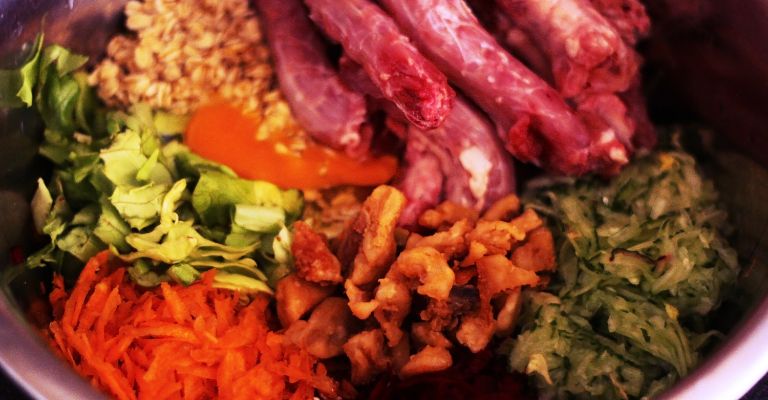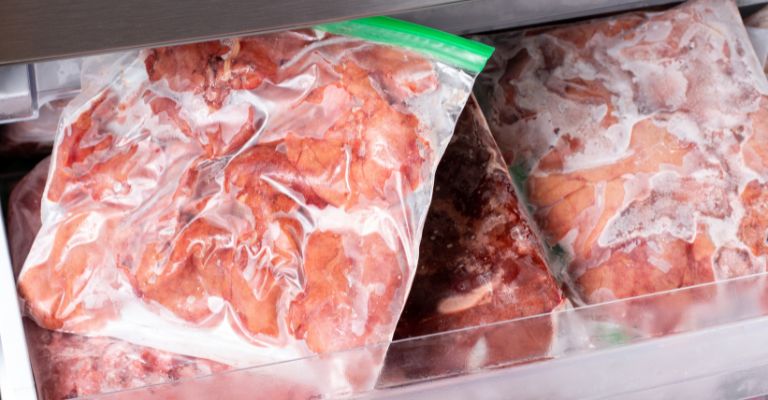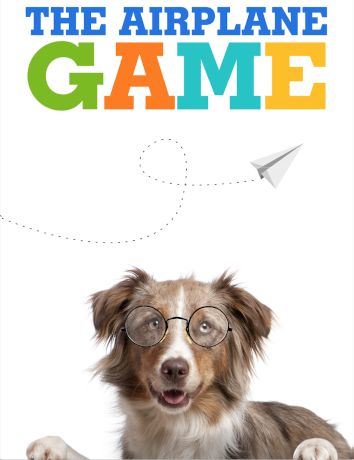In “The Ultimate Guide to Storing and Handling Raw Dog Food,” you will discover the best practices for safely storing and handling raw dog food. Whether you’re a seasoned raw food feeder or just starting out, this article will provide you with valuable tips and insights to ensure the health and well-being of your furry friend. From proper storage methods to safe handling techniques, this comprehensive guide is your go-to resource for keeping your dog’s food fresh, nutritious, and free from harmful bacteria. So, let’s dive in and learn how to provide the best care for your canine companion!

Introduction
Welcome to the ultimate guide to storing and handling raw dog food! As a responsible pet owner, it is crucial to understand the importance of properly storing and handling raw food to ensure the health and well-being of your furry friend. In this comprehensive article, we will cover everything you need to know about maintaining the nutritional value, preventing bacterial contamination, choosing the right storage containers, refrigeration and freezing, safe thawing practices, preventing cross-contamination, handling raw meat-only diets, dealing with travel and outdoor activities, when to seek veterinary advice, and more! So let’s dive in and learn how to keep your dog’s food safe and delicious!
Importance of Proper Storage and Handling
Maintaining Nutritional Value
Proper storage and handling of raw dog food are essential to maintain its nutritional value. Raw food contains essential nutrients and enzymes that can be destroyed if not stored correctly. Exposure to light, heat, and air can lead to nutrient degradation and loss of enzymatic activity. To ensure your dog receives all the necessary nutrients from their diet, it is crucial to store their food properly.

Preventing Bacterial Contamination
One of the primary concerns when handling raw dog food is the risk of bacterial contamination. Raw food, especially meat, can carry harmful bacteria such as Salmonella and E. coli. These bacteria can cause severe gastrointestinal issues and pose a risk to your dog’s health. Proper storage and handling techniques play a vital role in minimizing the risk of bacterial contamination and keeping your dog safe.
Choosing the Right Storage Containers
Types of Containers
When it comes to storing raw dog food, there are various container options available. Some of the commonly used containers include airtight plastic containers, stainless steel bowls with lids, glass containers, and resealable freezer bags. Each type of container has its advantages and disadvantages, so it’s important to choose the one that suits your needs and preferences.
Material Considerations
No matter which type of container you choose, it’s essential to consider the material. Avoid using containers made of materials that can leach harmful chemicals into the food, such as certain plastics. Look for BPA-free and food-grade containers that are safe for storing raw food.
Container Size
Choosing the right container size is also crucial. It’s recommended to divide the raw food into individual meal portions and use appropriately sized containers for each meal. This helps minimize waste and ensures that each meal is fresh and properly stored.
Airtight Sealing
To maintain the freshness and minimize the risk of bacterial contamination, opt for containers that provide airtight sealing. Airtight containers prevent air and moisture from entering the container, preserving the integrity of the food. This is particularly important when storing raw dog food, as exposure to air and moisture can lead to spoilage and bacterial growth.
Refrigeration and Freezing
Refrigerator Temperature
Proper refrigeration is essential for preserving the freshness and safety of raw dog food. Set your refrigerator temperature to 40°F (4°C) or below. This helps slow down the bacterial growth and keeps the food fresh for a longer time. It’s advisable to use a refrigerator thermometer to ensure that the temperature is accurate.
Freezer Temperature
If you plan to store raw dog food for an extended period, freezing is the way to go. Set your freezer temperature to 0°F (-18°C) or below. Freezing raw food prevents bacterial growth and extends its shelf life. Make sure your freezer doesn’t have any temperature fluctuations that can compromise the quality of the food.
Separating Portions
When freezing raw dog food, it’s important to divide it into individual meal portions. This makes it easier to thaw only what you need for each meal, reducing waste and ensuring that the food remains fresh. Use separate containers or freezer bags for each portion to maintain proper hygiene practices.
Expiration Dates
Remember to label each container or freezer bag with the date of storage. As a general guideline, raw dog food can be safely stored in the refrigerator for up to three days. If you are using the freezer, the food can be stored for several months. However, it’s always a good practice to follow the manufacturer’s guidelines and use the food within the recommended timeframe.
Safe Thawing Practices
Refrigerator Thawing
Thawing raw dog food in the refrigerator is the safest method. Simply transfer the frozen portion from the freezer to the refrigerator a day or two before feeding time. This slow thawing process allows the food to defrost at a safe temperature and reduces the risk of bacterial growth. Remember to place the food in a leak-proof container to prevent any liquid from contaminating other items in the refrigerator.
Cold Water Thawing
If you need to thaw raw dog food quickly, you can use the cold water thawing method. Place the frozen portion in a sealed plastic bag and submerge it in cold water. Change the water every half an hour to ensure it remains cold. This method is faster than refrigerator thawing but requires more active monitoring to prevent the food from reaching a temperature where bacteria can multiply.
Avoiding Room Temperature Thawing
Thawing raw dog food at room temperature is not recommended. The temperature range between 40°F (4°C) and 140°F (60°C) is considered the “danger zone” where bacteria can multiply rapidly. Thawing at room temperature can result in uneven thawing and promote bacterial growth, increasing the risk of foodborne illnesses.
Preventing Cross-Contamination
Separate Storage Areas
To prevent cross-contamination between raw dog food and other food items, it’s essential to store them separately. Keep your raw dog food in a designated area of the refrigerator or freezer, away from human foods. This helps minimize the risk of pathogens spreading from the raw food to other items.
Proper Cleaning and Sanitization
After handling raw dog food, it’s crucial to clean and sanitize any surfaces, utensils, and bowls that came into contact with the food. Use hot, soapy water to wash them thoroughly, making sure to remove any traces of raw food. Sanitize the utensils and bowls using a mixture of one tablespoon of bleach per gallon of water, rinse them well, and allow them to air dry.
Handling Utensils
Designate specific utensils for handling raw dog food to prevent cross-contamination. Avoid using the same utensils you use for preparing or consuming human food. Keep the utensils used solely for your dog’s raw food separate, and wash them thoroughly after each use.
Pet and Human Hygiene
Maintaining good hygiene practices is key in preventing cross-contamination of pathogens. Wash your hands with warm, soapy water for at least 20 seconds before and after handling raw dog food. This helps protect both your and your pet’s health. Additionally, make sure your dog’s feeding area is clean and sanitized regularly to minimize the risk of bacteria.
Storing and Handling Raw Meat-Only Diets
Special Considerations
If your dog follows a raw meat-only diet, there are additional considerations to keep in mind. Raw meat diets are highly perishable and need to be handled with extra care. The guidelines for proper storage and handling mentioned earlier become even more crucial to ensure the safety and nutritional value of the food.
Preventing Foodborne Illnesses
Raw meat diets carry a higher risk of foodborne illnesses due to the presence of harmful bacteria. To reduce this risk, make sure to source your raw meat from reputable suppliers with proper handling practices. Also, consider freezing the meat for a week before feeding, as this will help kill any potential parasites.
Managing Strong Odors
Raw meat diets can have strong odors that might be offensive to some. To mitigate the smell, store the food in airtight containers in a separate area of the refrigerator or freezer. Additionally, consider using odor-absorbing agents such as baking soda or activated charcoal near the storage area to help neutralize any smells.
Dealing with Travel and Outdoor Activities
Insulated Travel Bags or Coolers
When traveling or engaging in outdoor activities, it’s important to keep your dog’s raw food fresh and safe. Insulated travel bags or coolers are excellent options for maintaining the appropriate temperature and preventing spoilage. Choose a bag or cooler that is specifically designed for storing perishable items and maintains a consistent temperature.
Using Ice Packs
To further extend the freshness of your dog’s raw food during travels, consider using ice packs. Place the frozen food portions along with ice packs in the insulated bag or cooler to help maintain a colder temperature. Make sure the food remains adequately frozen or chilled throughout the journey to ensure safety.
Portable Storage Containers
If you need to store smaller portions of raw food for outdoor activities, portable storage containers come in handy. These containers are designed to keep the food fresh, secure, and easily transportable. Look for leak-proof options that offer airtight sealing to prevent any spills or contamination during transportation.
When to Seek Veterinary Advice
Unfamiliar Symptoms
If your dog experiences any unfamiliar symptoms after consuming raw food, such as vomiting, diarrhea, or lethargy, it’s important to seek veterinary advice. While raw food can be highly beneficial for many dogs, some may have specific dietary sensitivities or allergies that need to be addressed.
Persistent Digestive Issues
If your dog consistently experiences digestive issues, such as chronic diarrhea or recurrent vomiting, it’s crucial to consult with a veterinarian. They can help determine if the diet or any specific ingredients in the raw food are causing the issues and provide appropriate guidance.
Unexplained Changes in Behavior
Changes in behavior, such as unusual aggression or sudden changes in energy levels, may sometimes be a result of dietary imbalances. If you notice any unexplained changes in your dog’s behavior after feeding them raw food, it’s best to seek veterinary advice for a thorough evaluation.
Conclusion
Properly storing and handling raw dog food is not only essential for maintaining its nutritional value but also for ensuring the health and well-being of your furry friend. By following the best practices outlined in this comprehensive guide, you can minimize the risk of bacterial contamination, preserve the freshness and nutritional value of the food, prevent cross-contamination, and make mealtime a safe and enjoyable experience for your beloved pet. Remember, when in doubt, always consult your veterinarian for guidance specific to your dog’s dietary needs. Here’s to happy and healthy meals for your canine companion!


